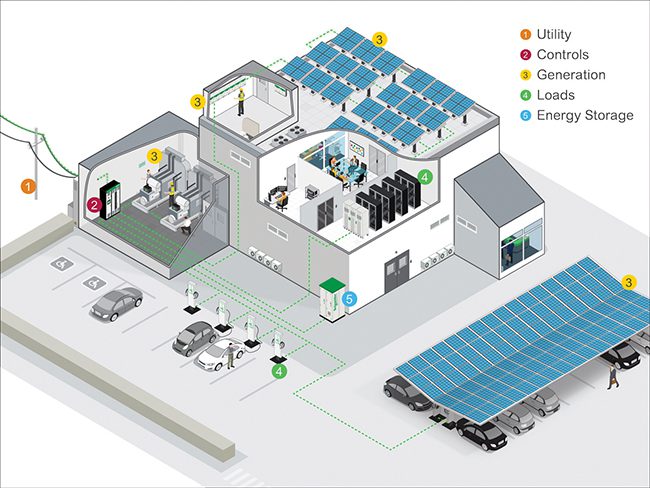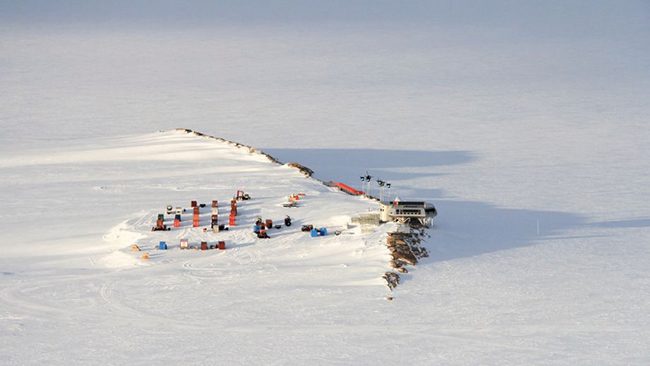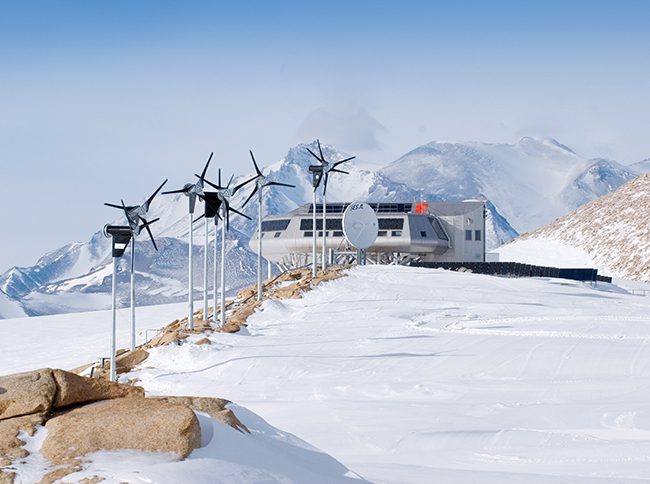Lunar microgrids, or remote microgrids detached from any utility grid, are fully capable of powering and monitoring many different infrastructures, even in space.
NASA recently revealed plans to explore the deployment and installment of a microgrid in space—more specifically a microgrid for a lunar base. The microgrid would be responsible for the electrification of the Artemis lunar base using a variety of distributed energy resources (DERs), including advanced battery storage, interchangeable system parts, and energy generation onsite.
The question is: how is this possible? What kind of technology like a microgrid makes a lunar base feasible and how would it operate off the power grid? To answer, microgrids are equipped for these exact situations. Remote microgrids can utilize solar arrays and run on autonomous operating systems in an “island mode,” meaning it is detached from an external electrical grid.
Lunar microgrids are simply remote microgrids, in this case, operating on the moon. They mostly follow the same applications and parameters that a remote microgrid on Earth would follow (Figure 1), of course, with some additional considerations. Let’s explore the functionality of a remote microgrid, what a remote microgrid is, and the considerations and possibilities of a successful lunar microgrid operating in space.
 |
|
1. A microgrid can be connected to a conventional power grid, but when the power grid goes down, that’s when the microgrid really earns its keep by utilizing installed onsite generation and energy storage to keep loads within the system powered up. Courtesy: Schneider Electric |
Remote Microgrids: Functionality, Use Cases, and Operations
Although remote microgrids operate and are self-sustaining in island mode, the capabilities of this type of microgrid expand beyond independence. Remote microgrids typically operate with the understanding that the resupply of resources—whether it be fuel, maintenance, software operation, or hardware upgrades—occurs at an infrequent cadence.
This is especially true for remote microgrids in hostile environments—places where traveling to and from the microgrid can be dangerous for crew members or incredibly expensive. In these scenarios, remote microgrids must have the features necessary to generate their own energy and keep operations afloat without constant manual attention.
One example of a remote microgrid in a hostile, non-traditional environment is the Princess Elisabeth Station located in Antarctica (Figure 2). The remote microgrid at this station regularly provides available energy, even under extreme weather conditions, because of its nuanced smart grid features that equip it to operate in this harsh environment. For example, weather changes in Antarctica can cause fluctuations in energy generation, production, and distribution capabilities, and so to compensate, the Princess Elisabeth Station was equipped with clusters of lead-acid batteries to store the excess energy for later use.
 |
|
2. Aerial view of the ridge and of Princess Elisabeth Antarctica from the Utseinen Nunatak. Courtesy: International Polar Foundation – René Robert |
Additionally, management of the microgrid at the station (Figure 3) is made easier through an advanced master controller, which drives the autonomous, onsite energy production and storage of the microgrid. Operators can peer into and provide maintenance to the microgrid without ever stepping foot on the continent—satellite links have established a permanent connection between Princess Elisabeth Station and virtual operators in Belgium, allowing scientists to collect, analyze, and interpret data in real-time.
 |
|
3. Princess Elisabeth Station is the first zero-emission polar research station with wind turbines, solar panels, and satellite dish. Courtesy: International Polar Foundation – René Robert |
Lunar Microgrids—Remote Functionality in Space
A remote microgrid on the moon would still need to be dynamically operable, generating or producing energy at peak hours and distributing excess stored energy in sub-optimal ranges like a lunar night. It would need to remain operable without daily maintenance, and autonomous reactions to the environment would be essential.
In the past, plans for a lunar microgrid considered the issue of energy, and strategies revolved around monthly refuels conducted by astronauts, who would take trips back and forth from Earth to provide energy for the lunar base. This process would not only be extremely expensive, but it would raise the potential risk of a negative incident by a considerable portion, as the trips could be hazardous to equipment transport, fuel integrity, and especially human life. Today, solar arrays and battery storage technology are powerful enough to generate excess solar energy and store it for future use on the moon, eliminating many of the risks associated with the regular manual maintenance of a remote microgrid or lunar microgrid.
A unique concept that would be applied to a lunar microgrid, however, is preventative maintenance (PM). PM builds the microgrid with specialized parts and minimal complexity to ensure that manual maintenance of the hardware is kept at its lowest frequency. This enables the highest operable efficiency for lunar microgrids, as maintenance trips to update or upgrade the microgrid would cost much more than a microgrid in a hostile environment on Earth.
Similarly, solar generation on the moon during lunar days could potentially be easier for the lunar microgrid, as less sunlight is scattered on the moon due to a lack of atmosphere. While remote microgrids on Earth may need a combination of renewable onsite energy generation and manually refueling from time to time, technology as it exists today may allow for a lunar microgrid to completely operate on solar energy alone, cutting costs and improving downtime for all operations.
Lunar Infrastructure: Powering Architecture and Keeping It Online
Microgrids on the moon would serve the purpose of keeping the lunar base online, both for normal operations and during an emergency. That means any purpose the base offers, from lodging for astronauts to research labs, infirmaries, and more, would rely on 24/7 available energy from the microgrid to function properly. In order to guarantee power, systems must be in place to ensure power during all of the following:
- ■ Normal “daily” operations
- ■ “Nighttime” operations
- ■ Emergency operations
- ■ Blackout resolution
A remote microgrid on the moon cannot only provide energy for the base and lack the infrastructure for supplemental power needs, the microgrid must also have excess energy to provide and distribute power in select circumstances, as well as deploy a backup system of power to prevent blackouts should the main microgrid system fail. Just as on Earth there are scenarios where several layers of backup power systems are needed to ensure operations remain online, the same would be true of the lunar base infrastructure powered by a remote microgrid. Additionally, the criticality of this power to produce and circulate air/create pressurization at all times is crucial to the function of the microgrid and the quality of the bases’ emergency equipment loads. Protections must be put in place to ensure these systems run smoothly.
To prevent malfunctions or additional redundancies, infrastructure is not just necessary, it is lifesaving. Microgrids in remote communities, where the communities rely on constant energy output from the microgrid, will often have an N+1 redundancy, or one level or layer of independent backup components to build resiliency, within the microgrid to allow the system to continue operating in the event a segment of its technology malfunctions. A lunar microgrid would need investments that create N+2 or more redundancies in the system. The more remote the microgrid is, the more important redundancies are to protect the infrastructure at hand.
In the occurrence of a software malfunction or major issue with the internal operating system of the microgrid, remote operators, who can access the lunar microgrid via satellite, can also work within the system to resolve issues without physically being at the lunar base. Off-grid access to energy operations, building management systems, and electrification projects can all be accessed virtually via the centralized controller, and just as the same controllers work via satellite on Earth, the same functionality would be available on the moon. Special considerations like the Earth’s magnetic field and solar flares would need to be made, however, in case anticipations for communications blackouts are to be expected.
Although special accommodations in some areas would be made for the lunar microgrid, most of the requirements to run a successful remote microgrid on the moon are things we have experience deploying here on Earth. The mechanisms that enable remote microgrid functionality, maintenance, reliability, and sustainability follow the same principles, whether on Earth or on the moon, and current logistics planning on energy generation, efficiency, and storage make lunar microgrids a possibility today.
—Lance Haines is Microgrid Chief Technology Officer at Schneider Electric.











